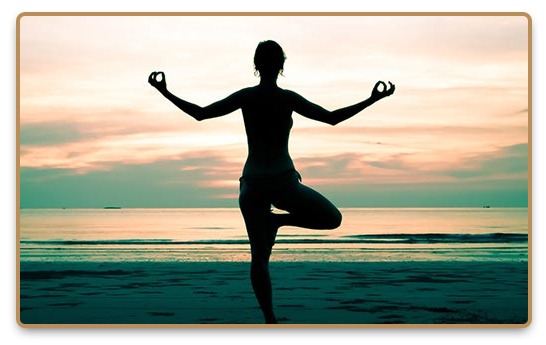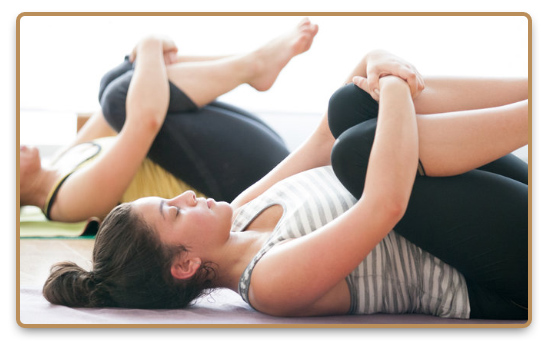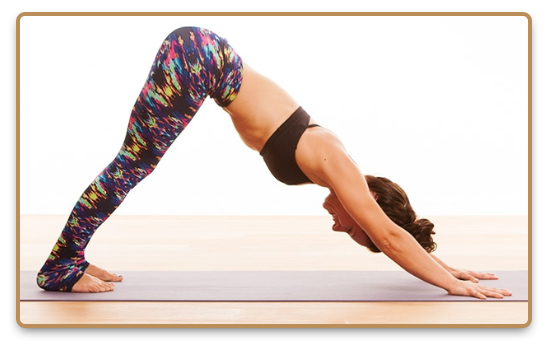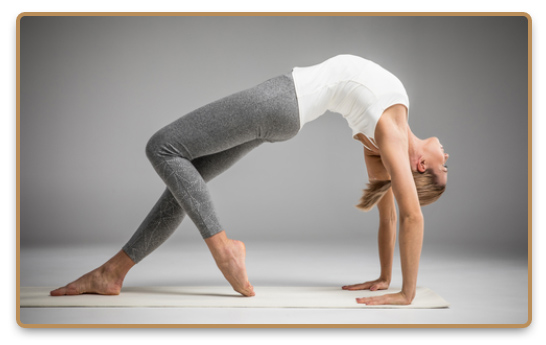
02 Feb Ashtanga Yoga: The 8 Limbs of Yoga Explained
What Is Ashtanga Yoga?
Ashtanga yoga is a very popular style of yoga developed by K. Pattabhi Jois in 1948. The name means “eight-limbed yoga”, referring not to the limbs of our body, but the main tenets of a yoga practice as illustrated by Patanjali in the Yoga Sutra: “yama”, or moral codes; “niyama”, self-purification and study; “asana”, or posture; “pranayama”, or breath control; “pratyahara”, or sense control; “dharana”, or concentration; “dhyana”, or meditation; and “samadhi”, or contemplation.
Jois, however, seems to have put a particular focus on the “asana” aspect of the practice. He believed it was impossible to get the full benefit of the other seven limbs if the body itself was weak. This has made Ashtanga yoga known for its exercise aspect.
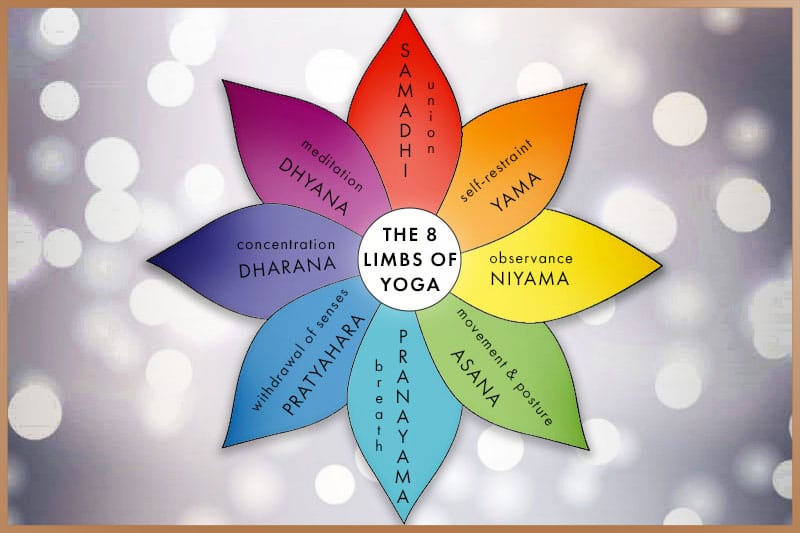
Ashtanga Yoga and its Founder K. Pattabhi Jois
K. Pattabhi Jois started the Ashtanga Yoga Research Institute out of his home in Lakshmipuram, Mysore in 1948. He is said to have based his style upon a mixture of ancient texts such as The Yoga Korunta, as well as his own practice and the tutelage of his mentor Krishnamacharya, who is considered to be the founder of modern yoga. He made his first trip to the United States in 1974 and since then, his particular style of yoga has grown to immense levels of popularity, especially espoused by celebrities such as Sting and Madonna.
It also led to a very popular offshoot style of yoga called Power Yoga, which focuses on a more intense, but less rigidly structured version of the vinyasas used in Ashtanga yoga. Jois has spoken out against Power Yoga, saying it goes against the primary principles of his practice.
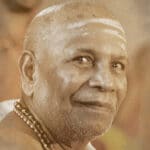
The Ashtanga yoga system should never be confused with “power yoga” or any whimsical creation which goes against the tradition of the many types of yoga shastras (scriptures). It would be a shame to lose the precious jewel of libiration in the mud of ignorant bodybuilding.
What Does an Ashtanga Yoga Practice Look Like?
Ashtanga yoga has a particular focus on the asanas, and Jois believed that one could not get the full benefit of yoga’s other limbs if one did not have a disciplined asana practice. He encouraged his students to take up a daily practice of asanas and once the body is strong enough, one could be able to start their mastery of the other yoga limbs.
See How to Practice Ashtanga Yoga with a simple device.
What Are the Principles of Yoga Asanas?
1. Vinyasas
Ashtanga yoga asanas are rooted in a few principles that ensures one gets the most out of their practice. The first is the vinyasas, which is what many people associate with this kind of yoga. They are a series of connected movements, tied with certain breathing patterns that in Ashtanga yoga are strictly adhered to.
There are three groups of six main sequences of this type of yoga. It is highly encouraged that one masters the previous sequence before moving onto the next. The first is the yoga chikitsa, or primary series, which is said to encourage alignment and cleansing of the body as well as building the strength and flexibility to move onto the next series.
The next is the nadi shodhana, or intermediate series. This is said to open up our body’s energy flow and improve the health of the nervous system. The first two series begin with sun salutations and go through standing, seated, inverted poses, and then back bends. The intermediate level is similar to the first, but introduces more advanced variations of the poses, as well as a few new ones.
Finally, there is the extremely difficult advanced series or sthira bhaga, which itself is made up of four sequences. Very few have made it to this level. Most are content with just the intermediate level.
2. Pranayama
The next important principle is pranayama or breathing yoga. It is a controlled form of inhalation and exhalation in the correct ratios. In Ashtanga yoga, the ratio between the two is equal, but the length of each is trained to be longer over time and can help one reach the level of flexibility needed for the more advanced positions.
Most importantly though, this breathing needs to be connected to the movement of the postures. There seems to be no clear consensus on how many breaths are expected for each position, or if it is necessary to use ujjayi breath, which is a method of deep breathing where you use your diaphragm and close off the glottis slightly so it makes a whooshing noise.
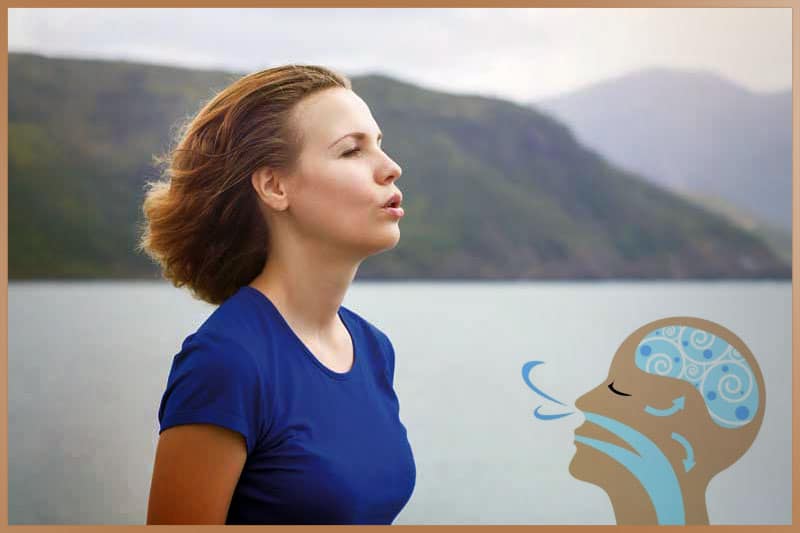
3. Dristhi
Dristhi is another important element of this type of yoga. It refers to the specific place of focus for the eyes while doing the vinyasas. There are nine general eye placements: between the brow, navel, down one’s nose, towards the hands, the thumb, right side, left side, up, or towards the feet.
Dristhi is particularly important in the development of the “dharana” (concentration) and the “dhyana” (meditation) limbs of the yoga practice. The combination of pranayama, dristhi, and posture make up tristhana, which is essential for perfecting one’s yoga practice.
4. Bandhas
The final main element is the bandhas, which means “restraint or “binding”. These are basically muscular “locks” that are said to help keep our breath and pranic energy within our bodies.
The main bandhas used in Ashtanga yoga are: jalandhara bandha, or the chin lock, where you lower your chin to your collarbone; uddiyana bandha, or abdominal lock, where you exhale completely and contract the abdominal muscles; mula bandha, or anal lock, where you contract your sphincter muscles and try to push it together with you abdominal muscles.
These bandhas are usually combined with the asanas, but can be practised anytime. They are said to be absolutely essential to proper yogic breathing.
How Does the Mysore School of Ashtanga Yoga Teach?
Any discussion of Ashtanga yoga cannot be complete without a mention of the Mysore school of yoga teaching as advocated by Jois. In this style, the teacher shows the general sequence to the student one-on-one and they can then practice at their own pace, often in a room with other students. Adjustment and direction is given as needed. The student will often work on a very select group of postures until they’ve reached near perfection before moving onto the next.
The Myths that Surround Ashtanga Yoga
Ashtanga is sometimes perceived as inflexible because of its use of many predetermined sequences; however, with experience and proper use of the tools of the practice, it becomes incredibly flexible. If a particular person is not getting the desired result from a particular pose or sequence at a particular time, they can adjust it. Teachers with the necessary knowledge can assist practitioners of all levels in small groups, who thus receive much more individual attention and customized practice ideas from the Mysore School.
Ashtanga Yoga is not just about doing the asanas in a particular order. Because each sequence in the Ashtanga practice has a unique effect on the neurological system when all the tools (breath technique, postures, drishti and bandhas) are used simultaneously. One way to look at this is that the purpose of the postures is to test the practitioner’s ability to keep the nervous system and mind under control.
What Are the Benefits and Risks of Ashtanga Yoga?
Physical and Mental Benefits of Ashtanga Yoga
Ashtanga yoga is not meant to be seen as a workout. To only focus on the physical aspects of the practice is ignoring the ultimate purpose. Yet, one cannot ignore that a large focus of this practice is physical, and if practised daily as encouraged by the Jois, there will be some clear benefits like any regular exercise regimen.
It has been shown in studies that yoga asanas are a beneficial form of exercise, however, it may not prove better than others in increasing physical fitness. Numerous blogs and testimonials speak for the transformative power of this yoga. Given the difficulty of the asanas, it can help build core and upper-body strength, tone the muscles, increase flexibility, and functions as aerobic exercise.
Some suggest that when combined with a healthy diet, it can lead to weight loss similar to other forms of physical exercise. The bandhas, specifically mula and uddiyana have been shown to increase one’s libido, improve digestion, strengthen the abdominal muscles, and massage the internal organs of the abdominal cavity.
Start practicing today
The Egely Wheel is trusted by thousands of people who practice yoga, telekinesis, meditation and healing. This device is the best solution for measuring your energy flow and efficiency of healing, and you get instant feedback.
Due to the complexity of some of the sequencing and the concentration required, it has been suggested that a regular practice can help keep one’s mind sharp. Naturally, such movements can help encourage an increase in coordination and balance, as well. In one study, a group assigned to regular ashtanga yoga reported an increase in their short term memory and concentration.
Ashtanga Yoga as a Supplementary Therapeutic Practice
Yoga is generally being used as a supplementary therapeutic practice that can treat a variety of emotional and mental disorders. It has proven particularly effective in the treatment of depression and anxiety.
Studies have suggested that ashtanga yoga can specifically improve one’s general reported quality of life, mood, and sleep patterns.
Meditative Effect of Ashtanga Yoga
Since one is doing the same types of movements daily, many have said that it can have a very meditative effect. Many types of meditation have been known to induce a state of calm in most people.
Given the very negative effects of stress and cortisol on the body, any practice that lowers our stress is therefore considered positive to our health.
Be Careful When Beginning Ashtanga Yoga
Given the intensity of some of the positions, one should be careful when beginning any yoga practise. Injury in yoga, not just ashtanga yoga, is very common, especially in the knees, and it is recommended that one starts with a class to assist with proper alignment.
Though, even with a teacher, one can still risk injury. There have been reports of yoga teachers forcing their students into the proper asanas a bit too vigorously, causing injury.
20 Sources +
Egely Wheel has strict sourcing guidelines and relies on peer-reviewed studies, academic research institutions, and medical associations. We avoid using tertiary references.
- A letter from Sri.K. Pattabhi Jois to Yoga Journal, Nov. 1995 – http://aylibrary.blogspot.com/
- The Health Benefits of Yoga and Exercise: A Review of Comparison Studies – http://doi.org/
- Health Benefits of Meditation: What the Newest Research Shows – http://doi.org/
- Mysore Practice – https://www.ashtangayogaparis.fr
- Yoga pioneer Pattabhi Jois dies – http://news.bbc.co.uk/
- Ashtanga Yoga in the Tradition of Sri K. Pattabhi Jois – http://www.ashtanga.com/
- Ashtanga Yoga Background – http://www.ashtanga.com/
- Ashtanga vinyasa yoga – https://en.wikipedia.org/
- Tirumalai Krishnamacharya – https://en.wikipedia.org/
- Ujjayi – https://en.wikipedia.org/
- Yoga Korunta – https://en.wikipedia.org/
- The effects of Ashtanga yoga on autonomic, respiratory and cognitive functioning; psychological symptoms and somatic complaints: A controlled study – https://search.proquest.com/
- The Complete Yoga Book: The Yoga of Breathing, Posture and Meditation – https://www.amazon.co.uk/
- Science Proves Ashtanga Yoga Is Good for You – https://www.doyou.com/
- How Stress Affects the Immune System – https://www.psychologytoday.com/
- Special supplement: Yoga and mental health – https://www.researchgate.net/
- Ashtanga Yoga and Founder Pattabhi Jois – https://www.verywellfit.com/
- Most Popular Types of Yoga Explained – https://www.verywellfit.com/
- Power Yoga History and Health Benefits – https://www.verywellfit.com/
- So You Think You Know What Ashtanga Yoga Is All About… – https://www.yoganatomy.com/ashtanga-yoga/
Updated: July 22, 2024. – This article was originally published on February 2, 2021.
Discover more types of Yoga
-
Zen Yoga: A Fusion of Yoga and Japanese Zen Philosophy
Zen yoga is a holistic yoga practice that blends together hatha yoga with an increased focus on Buddhist philosophies. Learn more...
-
Yin Yoga: Its Effectiveness in a Fast-paced Life
Yin yoga is a type of hatha yoga mixed with daoist philosophy that focuses on the holding of asanas for longer periods of time without props. Learn more...
-
Vinyasa Yoga: Focus on the Flow of Movement
Vinyasa yoga is a term used to describe a variety of yoga styles that utilize continuous movement instead of holding positions for long periods. Learn more...

